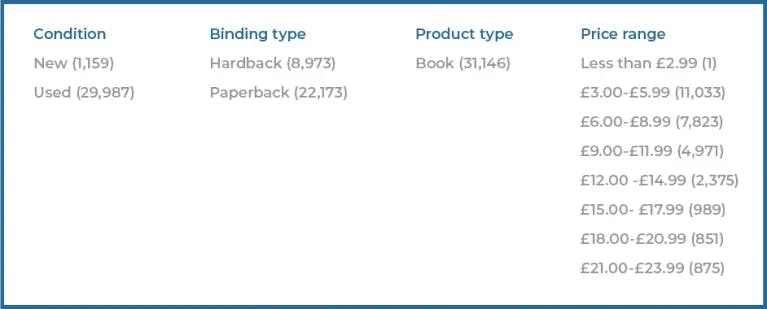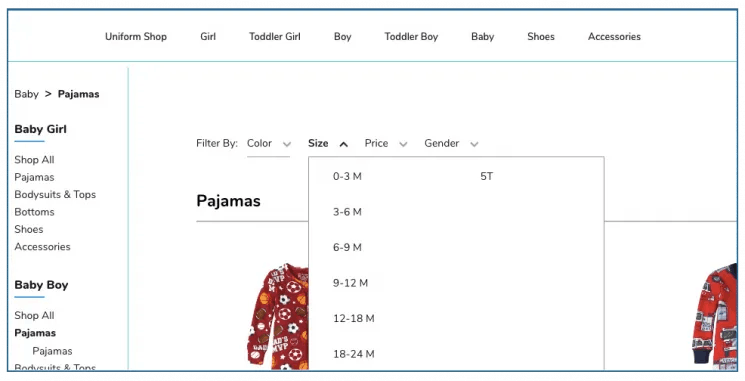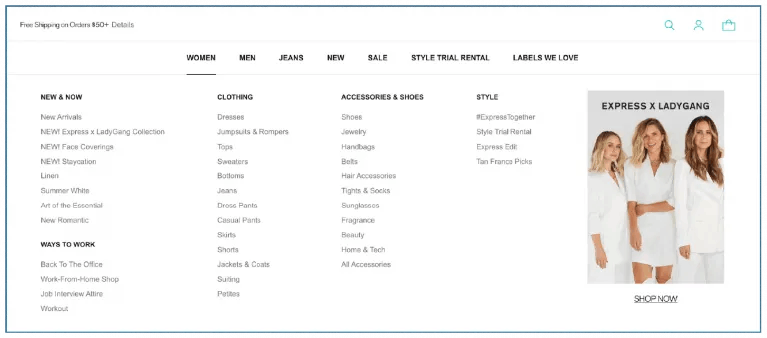Search Facets vs Filters
Facets
Facets are children of the defined filters. They are more like adopted ones because they may change dynamically based on the query (which we might discuss later). For example, a shirt can be of ‘Brand: Tommy Hilfiger,’ ‘Size: M’, and ‘Color: Blue.’ Shoppers find it easier to choose if such distinctions are well-framed and provided on the site.
Filters and Facets help to lead the otherwise embryonic websites to a much more mature state by providing diversity in a better form.
Let’s dive deep into ‘Facets’:
Facets and their values strain out all the unnecessary products that don’t intend for your shopper’s target query. Suppose they typed the query ‘Books’ on the search bar of your eCommerce site. Now, tracking the query, you are sure the shoppers are looking for books, but then:
Any specific author?
Any specific genre?
Any recommendations?

The above screenshot is from one of our customers in the UK, World of Books.
And exactly these questions are marked as filtered facets. So, for the query ‘q=books,’ facets are:{ Genres, Authors, Price, Format, Language}.
Genre: Thriller, Romance, Biographies, Fiction
Author: Paulo Coelho, J.K. Rowling, Stephen King, Amish Tripathi
Format: Paperback, Hardcover, Kindle
Now, these facets help shoppers make their own divisional choices, and within minutes you can see them at their cart paying for it, not abandoning it. So, even if you start with the query ‘Books,’ which contains 1700 products, by selecting the facets genre, you narrow it down to 160, and by selecting ‘Thriller’ from the facet genre, you come down to 42.
But the aforementioned facets were all ‘Text’ Facets. Text facets are the ones that have single String values. But what is the solution if we have a popular attribute like ‘Price’?
No shopper is ever going to say, ‘Oh! I am searching for a shirt that is specifically for $45.5. We mean not the normal ones. Instead, people have a pre-imposed filter on their products like ‘I am looking for shirts for a range like $30-$40. Not more than that.’ So, price facets were introduced as ‘Range’ facets which categorize products into different ranges.

For query: books,
Price facet may have values:
$5-$15
$16-$25
$26-$50
And so on.
More ways to use Facets?
Multiple Facets
When facets have already made your life easier, how about selecting multiple of them? Now, after navigating to Books > Genre> Thriller, which made your search results 42 products, you would still want your shoppers to get to their favorites. So, they select another facet on the filter category ‘Author: Sidney Sheldon’ to further filter them down. And now, after Books > Genre> Thriller and Books > Author> Sidney Sheldon, we see Woah! Just 12 results.
And definitely, a person who triggers down to such depth can make a viable decision out of the 12 products they see. This shortens the path to purchase by narrowing down the options and fastening the decision-making process. That is the power of Filters and Facets.
Dynamic Faceting
While filters are generic for all the query types, facets are specific and change dynamically with each query typed. Not many search engines provide this asset, but with Unbxd’s AI tech, you can have a facet list for every searched query. So, if the query is men’s shoes, the facets appear as color and size. If the query is ‘Hard Disk,’ the facets appear as ‘Brand,’ ‘Connection type,’ ‘Format,’ and ‘Size.’
If the query is ‘Pillows,’ the facets appear as ‘Brand,’ ‘Bedding Size,’ ‘Material,’ and so on.
Why are Filters important?

Filters diversify the product catalog by putting them under relevant categories of attributes. Filter terms are generic in their definition. A broad category of terms like ‘Men’ and ‘Women’ is defined as filters. When you provide these filters, your shopper is elated and quickly selects a filter to match his choice.
Shoppers enter a site, but they look for an overall differentiation. Women entering the site would want skirts/jewelry/shorts, while the men would want pants/shirts/trousers.
For proper diversification, catalogs are therefore categorized as Men, Women, Shoes, Accessories, etc.
Applying filters is as important as any other Merchandising Technique. But once you select an overarching category, what about digging deeper
Which is the one you need?
Search Facets vs. Filters have taught us that it adds an extra layer of detailing and intelligence for a proper display of products. Although, filters, unlike facets, do not change dynamically. So, facets can also be defined as subsets of filters. With attributes defined as facets, you let your shoppers take a happy face home which remains an alien topic to many.
Therefore, if you need to affix this capability along with numerous other features to make your eCommerce site search stronger and easier for your shoppers, then book a demo and let your eCommerce site roll over the charts.







